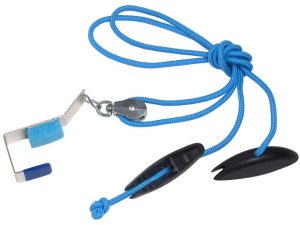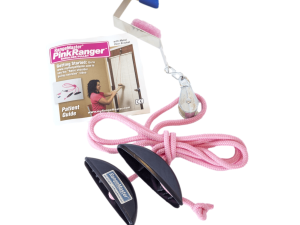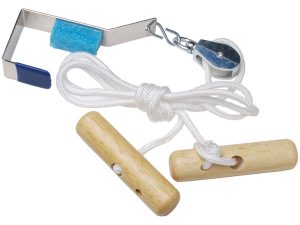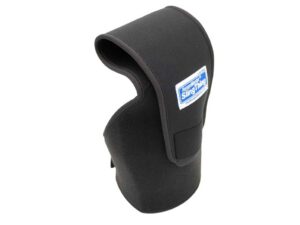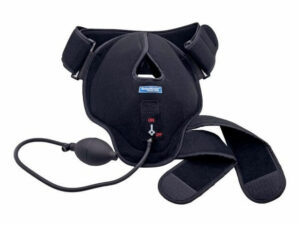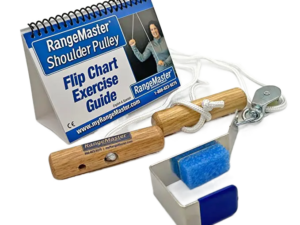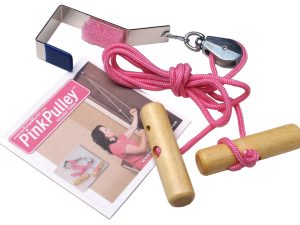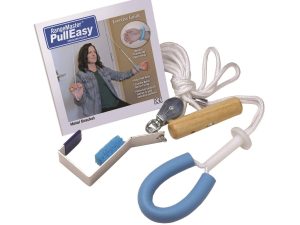After shoulder surgery or injury, how long do I have to wear this sling?
The length of time you will need to wear a sling after shoulder surgery or injury will vary depending on the specific type of surgery or injury you have experienced. In general, it is important to follow your doctor's instructions and wear the sling for as long as they recommend. This is because the sling is designed to help support your shoulder and allow it to heal properly. If you do not wear the sling for the recommended amount of time, you may experience additional pain or discomfort, or you may delay the healing process. It is also important to make sure you are using the sling properly, as improper use can also delay your recovery. If you have any questions or concerns about how long you should wear the sling, you should talk to your doctor. They will be able to provide you with personalized advice based on your specific situation.
Can I take the shoulder sling off when I shower?
It is generally safe to remove your sling when you shower, but you should check with your doctor first to be sure. Some doctors may recommend that you keep your sling on at all times, including when you shower, to provide maximum support for your shoulder. Others may recommend that you remove the sling for brief periods, such as when you shower, to allow for some movement and prevent stiffness.
If your doctor does recommend removing the sling for showering, it is important to follow a few safety precautions. First, make sure you have someone nearby to assist you in case you need help. Second, use a plastic bag or shower bag to cover the sling and keep it dry. Third, avoid getting the incision site or dressing wet, as this can increase the risk of infection. Finally, be careful not to slip or fall while showering, as this could cause further injury to your shoulder.
Again, it is important to follow your doctor's instructions when it comes to removing your sling for showering. If you have any questions or concerns, be sure to ask your doctor for guidance.
Can I drive with a shoulder sling on?
In most cases, it is not safe to drive with a sling on. A sling is designed to support your arm and shoulder, and it can restrict your range of motion and impair your ability to operate a vehicle safely. Additionally, the added weight of the sling can affect your balance and make it more difficult to control the steering wheel or pedals.
If you have had shoulder surgery or a shoulder injury, it is important to avoid driving until you have fully recovered and your doctor has cleared you to do so. This will typically involve regaining full range of motion and strength in your shoulder, as well as being able to operate the vehicle safely. If you are unsure whether it is safe for you to drive with a sling on, you should talk to your doctor. They will be able to provide you with specific advice based on your individual situation. In the meantime, consider using alternative forms of transportation, such as a taxi, rideshare service, or public transportation.
How can I sleep better with shoulder pain?
If you are experiencing shoulder pain, there are a few steps you can take to help you sleep better at night. Here are some tips to consider:
- Use a firm mattress and a supportive pillow. A firm mattress will help to support your body and reduce pressure on your shoulder, while a supportive pillow can help to keep your neck and spine aligned. You may want to consider using a body pillow or placing a pillow between your knees to provide additional support.
- Avoid sleeping on your painful shoulder. If possible, try to sleep on your back or on the opposite side from your painful shoulder. You may need to use a special pillow or cushion to support your arm and keep it in a comfortable position.
- Use heat or cold therapy. Applying heat or cold to your shoulder can help to reduce pain and stiffness. Try using a heating pad or warm compress before bed, or try using a cold pack or ice pack wrapped in a towel for 15-20 minutes.
- Take pain medication. Over-the-counter pain medication, such as ibuprofen or acetaminophen, can help to relieve pain and make it easier to sleep. Be sure to follow the instructions on the packaging and talk to your doctor if you have any questions.
- Try relaxation techniques. Relaxation techniques, such as deep breathing, meditation, or progressive muscle relaxation, can help to reduce pain and promote sleep. You may want to try listening to a relaxation or guided meditation recording before bed, or practicing deep breathing exercises.
Remember, it is important to talk to your doctor about any chronic pain you are experiencing. They can provide you with additional advice and treatment options to help manage your pain and improve your sleep.
Is it recommended to use a sleeping wedge to sleep better with shoulder pain?
A sleeping wedge is not typically recommended for people with shoulder pain. A sleeping wedge is designed to elevate the upper body, which can put additional pressure on the shoulder and may make pain worse. Instead, there are other steps you can take to help improve your sleep and manage shoulder pain. For example, you can try sleeping on your back or on the opposite side from your painful shoulder, using a firm mattress and supportive pillow, using heat or cold therapy, taking pain medication, and practicing relaxation techniques.
If you are experiencing shoulder pain and are having difficulty sleeping, it is important to talk to your doctor. They can provide you with personalized advice and treatment options to help manage your pain and improve your sleep. This may include medications, physical therapy, or other interventions.
Is it easier to sleep in a recliner when dealing with severe shoulder pain?
Sleeping in a recliner may be helpful for some people who are dealing with severe shoulder pain. A recliner can help to reduce pressure on the shoulder and allow you to sleep in a more comfortable position. However, sleeping in a recliner is not suitable for everyone and may not be the best option in all cases.
Before trying to sleep in a recliner, it is important to talk to your doctor about your shoulder pain. They can provide you with personalized advice and guidance based on your specific situation. In some cases, your doctor may recommend that you avoid sleeping in a recliner and instead try other sleep positions or use a special pillow or cushion to support your shoulder.
If your doctor does recommend sleeping in a recliner, it is important to choose a recliner that is comfortable and supportive. Look for a recliner that has a high back and armrests, and that allows you to adjust the angle of the backrest to find a position that is comfortable for you. It is also important to avoid sleeping in a recliner for extended periods of time, as this can lead to other health problems. Instead, try to use a recliner for short naps or as a temporary solution until your shoulder pain improves.
My doctor wont give me anymore pain medicine, when will my shoulder pain subside?
The length of time it takes for shoulder pain to subside after an injury or surgery will vary depending on the specific type of injury or surgery you have had. In general, pain from most shoulder injuries or surgeries will improve gradually over time, as the shoulder heals and the muscles and tendons become stronger. This process can take several weeks or even months, depending on the severity of the injury or surgery.
If your doctor has stopped prescribing pain medication for your shoulder pain, it may be because they believe the pain is manageable without medication. However, if you are still experiencing severe pain that is interfering with your daily activities, you should talk to your doctor. They may be able to provide you with additional treatment options or refer you to a pain specialist for further evaluation and management. It is important to communicate openly with your doctor about your pain and any concerns you may have. Together, you can work to find a treatment plan that will help to manage your pain and improve your quality of life.
What is a TSR surgery?
TSR stands for total shoulder replacement surgery. It is a surgical procedure that is performed to replace a damaged or diseased shoulder joint with an artificial joint. The goal of TSR surgery is to relieve pain, restore movement, and improve function in the shoulder. The surgery is typically recommended for people with severe shoulder pain or dysfunction that cannot be managed with other treatments, such as medication or physical therapy.
During TSR surgery, the damaged joint surfaces of the shoulder are removed and replaced with a metal ball and socket joint. The metal ball is attached to the upper arm bone (humerus), and the socket is attached to the shoulder blade (scapula). The artificial joint is made from medical-grade materials that are designed to mimic the natural movement of the shoulder.
TSR surgery is a major surgical procedure and requires a significant recovery period. Most people will need to wear a sling to support the arm and shoulder for several weeks after the surgery, and will need to undergo physical therapy to regain strength and range of motion. The success of TSR surgery varies depending on the individual and the specific condition being treated, but most people experience significant improvement in their pain and function after the surgery.
If you are considering TSR surgery, it is important to talk to your doctor about the potential risks and benefits of the procedure. They can provide you with more information and help you make an informed decision about whether TSR surgery is right for you.
Why do I need a total shoulder replacement?
You may need a total shoulder replacement (TSR) surgery if you have severe shoulder pain or dysfunction that cannot be managed with other treatments. TSR surgery is typically recommended for people with advanced arthritis or other conditions that have damaged the joint surfaces of the shoulder. These conditions can cause severe pain, stiffness, and limited range of motion in the shoulder.
TSR surgery is designed to replace the damaged joint surfaces of the shoulder with an artificial joint. The artificial joint is made from medical-grade materials that are designed to mimic the natural movement of the shoulder. The goal of TSR surgery is to relieve pain, restore movement, and improve function in the shoulder.
If you are experiencing severe shoulder pain or dysfunction, it is important to talk to your doctor about your treatment options. They can help you determine whether TSR surgery is appropriate for your situation, and can provide you with more information about the potential risks and benefits of the procedure. Together, you can decide on the best course of action to manage your shoulder pain and improve your quality of life.
What ice machine is recommended after shoulder surgery?
After shoulder surgery, it is important to use an ice machine or ice pack to reduce swelling and pain. There are many different ice machines and ice packs available, and the best one for you will depend on your individual needs and preferences. Here are some factors to consider when choosing an ice machine or ice pack for use after shoulder surgery:
- Size and shape: The size and shape of the ice machine or ice pack should be appropriate for your shoulder and the area you are trying to ice. Some ice machines are designed to fit around the shoulder, while others are more versatile and can be used on other parts of the body. Look for an ice machine or ice pack that will cover the area you need to ice without slipping or shifting.
- Type of cooling: Some ice machines and ice packs use ice, gel, or liquid to provide cooling, while others use a battery-powered cooling element. Consider which type of cooling will be most effective and convenient for you. For example, ice or gel may be more effective at reducing swelling, but a battery-powered ice pack may be more portable and easier to use.
- Ease of use: Look for an ice machine or ice pack that is easy to use and apply to your shoulder. Some ice machines have adjustable straps or Velcro closures to help hold them in place, while others may be more difficult to apply and remove. Consider your level of mobility and dexterity when choosing an ice machine or ice pack.
- Durability and reliability: It is important to choose an ice machine or ice pack that is made from high-quality materials and is designed to last. Look for an ice machine or ice pack that comes with a warranty or guarantee, and read online reviews to get an idea of the product's reliability and durability.
Ultimately, the best ice machine or ice pack for you will depend on your individual needs and preferences. Be sure to talk to your doctor or physical therapist for recommendations and advice on which ice machine or ice pack will be most effective and comfortable for you after your shoulder surgery.
When can I start gardening again after shoulder surgery?
After shoulder surgery, it is important to avoid activities that place excessive stress on the shoulder. This includes activities that involve lifting, pushing, or pulling, as well as activities that require a lot of range of motion in the shoulder. Gardening can be a physically demanding activity, and it is typically not recommended until several weeks or even months after shoulder surgery.
The exact amount of time you will need to wait before starting to garden again after shoulder surgery will depend on the specific type of surgery you have had and the speed of your recovery. In general, you should avoid gardening until your doctor or physical therapist gives you the okay to do so. This will typically involve regaining strength and range of motion in your shoulder, as well as being able to perform the specific tasks required for gardening without causing pain or discomfort.
If you are eager to start gardening again after shoulder surgery, you may be able to do some light gardening tasks that do not require a lot of strength or range of motion. For example, you may be able to do some weeding or pruning using tools that are designed to reduce strain on the shoulder. However, you should avoid heavy lifting, digging, or other activities that could cause injury or delay your recovery. It is important to listen to your body and stop gardening if you start to feel pain or discomfort. Be sure to talk to your doctor or physical therapist for specific advice and guidance on when and how to start gardening again after shoulder surgery.
When can I start skiing again after shoulder surgery?
If you are eager to start skiing again after shoulder surgery, you may be able to do some light skiing or snowboarding on gentle slopes that do not require a lot of strength or range of motion. However, you should avoid more advanced runs or tricks that could cause injury or delay your recovery. It is important to listen to your body and stop skiing if you start to feel pain or discomfort. Be sure to talk to your doctor or physical therapist for specific advice and guidance on when and how to start skiing again after shoulder surgery.
When can I start golfing again after shoulder surgery?
If you are eager to start golfing again after shoulder surgery, you may be able to do some light golfing or driving range practice that does not require a lot of strength or range of motion. However, you should avoid more advanced swings or shots that could cause injury or delay your recovery. It is important to listen to your body and stop golfing if you start to feel pain or discomfort. Be sure to talk to your doctor or physical therapist for specific advice and guidance on when and how to start golfing again after shoulder surgery.
What is a decompression surgery?
A decompression surgery is a surgical procedure that is performed to relieve pressure on a compressed nerve or nerve root. This type of surgery is typically recommended for people who have conditions that cause nerve compression, such as a herniated disc, spinal stenosis, or a pinched nerve. Decompression surgery is designed to relieve pressure on the affected nerve, which can help to reduce pain, numbness, tingling, and other symptoms.
During decompression surgery, the surgeon will make an incision in the skin over the affected area, and will then carefully remove any tissue or bone that is pressing on the nerve. In some cases, the surgeon may also need to remove a portion of a herniated disc or repair a damaged disc. The goal of decompression surgery is to create more space for the nerve and reduce pressure on it, which can help to improve nerve function and relieve symptoms.
Decompression surgery is a major surgical procedure and requires a significant recovery period. Most people will need to stay in the hospital for several days after the surgery, and will need to undergo physical therapy to regain strength and mobility. The success of decompression surgery varies depending on the individual and the specific condition being treated, but most people experience significant improvement in their symptoms after the surgery.
If you are considering decompression surgery, it is important to talk to your doctor about the potential risks and benefits of the procedure. They can provide you with more information and help you make an informed decision about whether decompression surgery is right for you.
What is debridement?
Debridement is the process of removing dead, damaged, or infected tissue from a wound. It is a common procedure that is performed to help wounds heal more quickly and effectively. Debridement can be performed using a variety of methods, including surgical removal, mechanical scraping or brushing, and chemical treatments.
Debridement is typically recommended for wounds that have become infected or are slow to heal. Dead or infected tissue can prevent a wound from healing properly, and can also increase the risk of further infection. By removing this tissue, debridement can help to promote healing and reduce the risk of complications.
Debridement can be performed in a doctor's office, clinic, or hospital, depending on the severity of the wound and the method of debridement being used. The procedure is typically quick and painless, and most people do not require any anesthesia. After debridement, the wound will be cleaned and dressed, and the healing process can begin.
If you have a wound that is infected or slow to heal, talk to your doctor about whether debridement may be beneficial. They can provide you with more information and help you decide on the best course of action for your situation.
What does my bicep have to do with shoulder pain and shoulder surgery?
Your bicep is a muscle in your upper arm that is located near the shoulder. The bicep is responsible for helping to move and rotate your arm, and it plays an important role in shoulder function. When the bicep is damaged or weakened, it can cause shoulder pain and difficulty moving the arm. In some cases, surgery may be necessary to repair or replace the bicep in order to relieve shoulder pain and restore function.
There are several conditions that can affect the bicep and cause shoulder pain, including tears or ruptures of the bicep tendon, bicep tendinitis, and bicep muscle strains. In some cases, these conditions can be treated with physical therapy, medication, or other non-surgical methods. However, if the bicep is severely damaged or ruptured, surgery may be necessary to repair or replace the bicep tendon.
If you are experiencing shoulder pain and think it may be related to your bicep, it is important to talk to your doctor. They can evaluate your condition and recommend the best course of action to relieve your pain and improve your shoulder function. This may include physical therapy, medication, or surgery.
When recovering from shoulder surgery, what bra is best, strapless or one strap?
After shoulder surgery, it is important to choose a bra that is comfortable and supportive, and that will not put excessive pressure on the shoulder. Strapless bras and one-strap bras are both options that may be suitable for people who are recovering from shoulder surgery. However, which type of bra is best will depend on your individual needs and preferences.
Strapless bras are designed to be worn without straps, and are typically held in place with an underwire or silicone gripper strip. This type of bra may be suitable for people who are recovering from shoulder surgery, as it will not put any pressure on the shoulder or cause discomfort. However, some people may find that a strapless bra is not as supportive as they would like, and may prefer to use a one-strap bra instead.
One-strap bras, also known as convertible bras, have straps that can be worn in different positions, including over the shoulder or across the back. This type of bra may be more supportive than a strapless bra, and can be adjusted to provide the right amount of support for your individual needs. However, wearing a one-strap bra may put pressure on the shoulder, depending on the position of the strap, and may not be suitable for everyone.
Ultimately, the best type of bra to use after shoulder surgery will depend on your individual needs and preferences. Be sure to talk to your doctor or physical therapist for advice and guidance on which type of bra will be most comfortable and supportive for you after your surgery.
Are steroid injections a good alternative to shoulder surgery?
Steroid injections are a treatment option that may be recommended for people with shoulder pain or inflammation. These injections can help to reduce pain and swelling, and can improve mobility and function in the shoulder. However, steroid injections are not always effective for everyone, and in some cases, surgery may be necessary to relieve shoulder pain and restore function.
Steroid injections are typically recommended for people with mild to moderate shoulder pain or inflammation. These injections can help to reduce inflammation and relieve pain, and may be a good alternative to surgery for people who do not want to undergo a major surgical procedure. However, steroid injections are not a permanent solution, and the effects of the injection may only last for a few weeks or months. In some cases, multiple injections may be necessary to maintain pain relief.
If you are experiencing shoulder pain and are considering steroid injections, it is important to talk to your doctor. They can evaluate your condition and recommend the best course of action to relieve your pain and improve your shoulder function. In some cases, steroid injections may be a good alternative to surgery, but in other cases, surgery may be necessary to provide more long-term relief. Your doctor can help you decide on the best treatment option for your individual situation.
Why do shoulder pulleys relieve shoulder pain?
Shoulder pain is a common complaint, and it can be caused by a variety of different conditions and injuries. One way to help relieve shoulder pain is by using shoulder pulleys. These devices are designed to stretch and strengthen the muscles and tendons in the shoulder, improving range of motion and reducing pain and stiffness.
Shoulder pulleys work by allowing the user to perform a variety of exercises that target the muscles and tendons in the shoulder. These exercises can help improve flexibility and strength, which can in turn help relieve pain and improve overall function in the shoulder. By using a shoulder pulley, the user is able to perform these exercises in a controlled and safe manner, reducing the risk of further injury or discomfort.
Using a shoulder pulley is relatively simple. The device typically consists of a rope or strap attached to a handle, which is then attached to a fixed point such as a door or wall. The user can then use the handle to perform various exercises, such as pulling the arm up and down, or across the body. These movements help stretch and strengthen the muscles and tendons in the shoulder, improving range of motion and reducing pain and stiffness.
Shoulder pulleys can be used by people of all ages and fitness levels. They are particularly helpful for individuals who have limited mobility or range of motion in their shoulders due to injury, surgery, or chronic conditions such as arthritis. By using a shoulder pulley, these individuals can perform exercises that are specifically designed to help improve flexibility and strength in the shoulder, reducing pain and improving overall function.
In conclusion, shoulder pulleys are a useful tool for helping to relieve shoulder pain. By stretching and strengthening the muscles and tendons in the shoulder, these devices can improve range of motion and reduce pain and stiffness. They are simple to use and can be beneficial for people of all ages and fitness levels, particularly those with limited mobility or range of motion in the shoulder.
Can I remove these plastic bandaid type stitches myself after shoulder surgery?
After shoulder surgery, you may have plastic bandaid-type stitches, also known as steri-strips or surgical tape, to help the incision heal properly. These stitches are typically applied by the surgeon and are designed to hold the incision closed and protect it from infection. In most cases, the stitches will need to be removed by a healthcare provider at a follow-up appointment.
It is not recommended to remove the plastic bandaid-type stitches yourself after shoulder surgery. These stitches play an important role in the healing process, and removing them prematurely or incorrectly can cause the incision to open or become infected. In addition, removing the stitches yourself can be difficult and painful, and may cause further injury to the incision or surrounding tissue.
If you have plastic bandaid-type stitches after shoulder surgery, it is important to follow your doctor's instructions for care and follow-up. They will schedule a follow-up appointment to remove the stitches and check on the progress of your healing. At this appointment, the healthcare provider will carefully remove the stitches and clean the incision, and will provide you with instructions for wound care and rehabilitation.
If you have any questions or concerns about the plastic bandaid-type stitches after your shoulder surgery, be sure to talk to your doctor or healthcare provider. They can provide you with more information and guidance on how to properly care for your incision and ensure a successful recovery.

